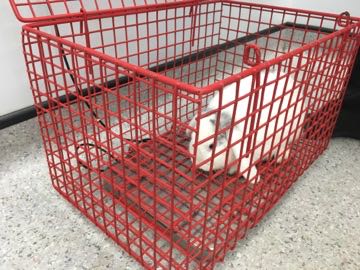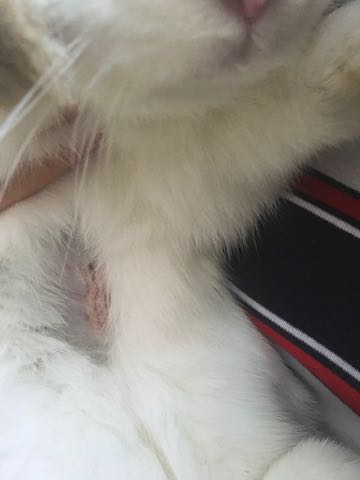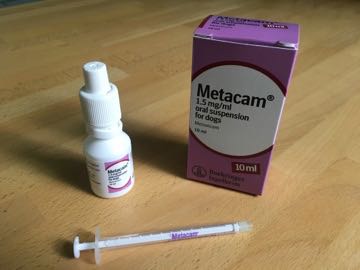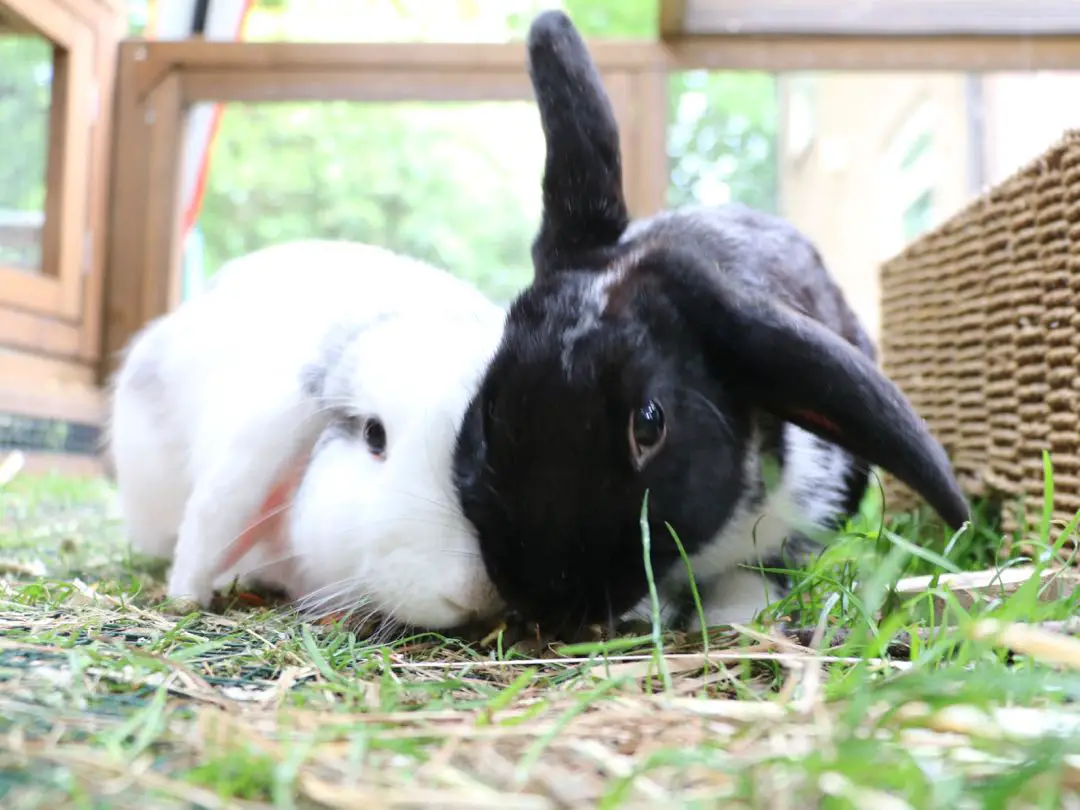Introduction
You may be considering getting your rabbit spayed, but aren’t sure what happens or what to expect. Last week, we had our female rabbits Fish and Chips spayed, so this post is based on our recent experience.
I’m going to take you through everything that happens, how much it costs, and why it’s worth getting your bunny spayed or castrated (neutered).
I am giving you what our experience was. Always check with your vet and follow their advice, as your circumstances may be different from ours.
Before the day
You need to book an appointment with a vet. It’s better if your vet is used to dealing with rabbits and other small animals. We used the vets associated with Pets at Home – Vets4Pets.
The operation will take place over the day, so you need to make sure that you are free in the morning to drop off your bunny, and again in the afternoon to pick up and take home. We dropped off Fish and Chips at 9am, and picked them up around 3pm.
You also need to make sure that you are going to be around for a couple of weeks at least after the operation – we nearly forgot this and were going to book it too close to our holiday.
On the day – morning
There is no need to stop your rabbit eating. This is different from other animals like cats and dogs, where you would stop them eating or drinking before an operation. But rabbits have a different digestion system that needs to keep moving food through it.
You will be using a suitable carrier to take your bunny to the vet (we like and own one of the small pet carriers sold by Pets at Home – check it out here).
You also need to take with some of your bunny’s favourite treats for after the operation. The vet will be keen for your rabbit to start eating again as soon as possible, so anything that will tempt them to start eating is good.
When I arrived at the vets with Fish and Chips, there were a couple of things to do before I left them.
First, I had to sign a disclaimer. This is standard before any operation. I also paid for the operations.

Next, the vet weighed them. Fish was 1.6kg, Chips was 1.9kg. They do this both for knowing how to medicate during the operation, and also for medication after the operation.
Additionally, later on they are weighed again to make sure they haven’t lost too much weight.
Then I went home.
And worried, a little bit. Don’t be surprised if you find yourself a little anxious.
On the day – while you’re waiting
Rather than just worrying, there is a job you need to do while you are waiting. And that is to prepare for the rabbit(s) to come home.
The vet may well recommend that the rabbit spends at least the first night indoors.
This is for two reasons – so that you can keep a watchful eye on your bunny while they recover, but also because after anaesthetic rabbits have trouble regulating their own body temperature. If it’s a cold night, they might even end up suffering from hypothermia.
We spoke about this with our vet. As it happened, we were in a warm spell, and the night-time temperature was going to be quite high.
Because of this, our vet was happy for our bunnies to go back into their own hutch.
Whether it ends up being their regular hutch, or whether you create something for them specially, your bunnies will have different requirements for the next couple of days until they can be checked over by the vet.
In particular, the vet told us not to use straw or woodchip. The bunny will have a fresh scar on their bellies, and so they shouldn’t be lying on anything sharp or rough at first.
That means that you need something softer for the bunnies to lie on – newspaper or cloth.
You could also buy large disposable pads similar to disposable baby changing mats – you can check them out on Amazon UK (or Amazon US). Our bunnies came home with one of these each from the vet.
On the day – collecting
We got a phone call from the vets about 2.30pm, telling us that both had come out of the operation well, but the nurse wanted another half hour to make sure that one of them was awake enough to come home.
I picked up Fish and Chips about 3.30pm. They had been offered some food (their favourite treats that I had packed earlier), but weren’t really hungry yet.
I also made a follow up appointment for three days later (this is about the maximum – more often the vet would see you two days later).

The vet showed me the scars from the operation, and explained how to take care of them the first evening and days.
She emphasised how important the following are when checking your rabbit after spaying:
- Is the wound looking OK?
- Are the rabbits pooing?
- Are the rabbits peeing?
- Are the rabbits eating?
- Are your bunnies hiding away?
- Are they behaving very differently from normal?
The vet also gave us some painkillers for the rabbits. Each rabbit had a different dose (based on their weight).
The vet also told us not to let our rabbits out of the hutch (not even into their attached run) until they had been to a check-up (again, to protect the wound).
We had to be particularly careful to check that both Fish and Chips were eating – if we just put food out, and saw that it was gone, perhaps only one of our rabbits was recovering well and eating.
The next few days until the check up
Fish and Chips gradually started eating more, but it took time. We give them a small amount of nuggets at the start of the day, which they normally go wild for. But after the operation, they would look at them, nibble one or two, then wander away for a while. We offered coriander (their favourite herb), and they would nibble a little bit.
But at least they were eating – this is extremely important for rabbits.
We could also tell that their poo was returning to normal within a day. And although not their usual, lively selves, our rabbits weren’t hiding away by themselves.
Giving the painkiller was tricky. You administer a syringe into their mouth. You have to go in via the side of the mouth to avoid their teeth.
Chips liked the medicine, and would happily take it. Fish didn’t like it, and it was harder to give her the full dose.
The wounds healed nicely; we had no problems here at all.
Overall, the three days following the operation saw our bunnies get gradually livelier and eating more normally. By the day of the check up, it was clear they were ready for their run, wanting more space to move around.
The check up visit
We brought Fish and Chips back to the vets in the afternoon three days after the operation. The vet checked them over, and was happy with how they were recovering. Our bunnies also got weighed again: Fish was now 1.58kg, and Chips 1.84kg. The vet was happy with this small level of weight loss.
The vet also told us that now we could let them back into their run, but not into the garden.
Why not? Our rabbits love to zoom around at top speed (I never knew rabbits were so fast animals). If anything caught the wound at their top speed, it might catch and tear.
We would have to wait another three days (so a week after the operation) before our rabbits would be allowed to roam freely in our garden again.
Next few days after the check up
Things gradually go back to normal after the check up.
You still need to check the wound regularly to make sure it is healing well.
For the next two or three days you can continue to give the painkiller to your rabbit.
The bedding can go back to normal (straw, in our case). This also helps settle the bunnies – they don’t like their home being messed around.
And after three days, we could finally let them back into the garden. They were delighted!
It was great to see them back to their old, adorable ways – binking and zooming and enjoying the garden.
What happens during the spaying operation?
The vet gives the rabbit an anaesthetic so the rabbit will be asleep during the operation. They shave a small patch of fur on the belly where the incision takes place (for female rabbits).
The rabbit is cut open and the reproductive organs removed (the ovaries and the womb).
For male rabbits, the testicles are removed.
In our case, the incision was then stitched up with soluble internal stitches. This means that the rabbits don’t have to go back to have the stitches removed.
What painkiller is used after the operation?
The vet prescribed our rabbits Metacam (a brand name for Meloxicam). It’s in oral suspension (ie, it’s a liquid). Ours also appears to have been packaged for dogs.

The concentration is 1.5mg of meloxicam in every ml. The syringe was marked in kg (that is, you draw up the liquid to the kilogram level of your dog).
The doses seem higher than you might expect (strong enough for a dog?). Part of the reason might be that it is extremely important for rabbits to start eating again, so ensuring that there is little or no pain is paramount.
Chips needed enough once per day equivalent to the 9.5kg mark; Fish, being lighter, up to the 8kg mark.
This shows how vital it is to follow your vet’s advice for your particular pet.
Also – your vet may use a completely different painkiller.
The right amount (or type) of medicine for one rabbit will be wrong for another.
How long does it take a rabbit to heal after being spayed
It normally takes about a week to ten days for a rabbit to be back to their old selves.
How much does spaying/neutering cost?
It cost us £80 for each rabbit. Spaying (females) costs a little more than neutering (males). If you choose an adoption rabbit from some stores, they may give you a discount towards the cost of spaying. For example, if you choose a rabbit that’s up for adoption from Pets At Home, they give you a voucher covering the entire cost of spaying or neutering.
What age should I spay my rabbit?
Vets4Pets recommend that rabbits should be spayed at around four to five months old. Fish and Chips were just under five months when we brought them in for spaying..
But it is also possible to get older rabbits spayed (for example, if you bring home an adoption rabbit that had not been neutered by the previous owner).
Male rabbits can be neutered a little bit younger, from about three months old.
What are the benefits of spaying?
I’ll list the benefits below, but it has been interesting watching Fish and Chips change their behaviour as they have got a bit older. When they hit about five months they started burrowing, and making nests inside the hutch.
More of an issue is that they started being active with one another. Fish would try to mount Chips, or the other way around, and each time the other rabbit would try to avoid it. These were the first times that we had seen any type of conflict between them.
It showed us that they were the right age to be spayed.
After spaying, they no longer try to mount each other, and are living happily with each other again.
And there are lots of benefits to having your female rabbit spayed:
It ensures that they can’t get pregnant. This is the most obvious one. The number of adoption rabbits in pet stores shows that we don’t need to add more accidentally.
Also, every pregnancy carries risk for a rabbit, and they can get pregnant multiple times in a year.
Spayed rabbits are likely to live longer. Female rabbits are particularly prone to uterine cancers and other reproductive diseases. Spaying removes this high risk factor to their lives.
One example of this is neoplasia (new, abnormal growth). Female rabbits can form adenocarcinoma (malignant tumours) of their endometrium.
Sadly, without spaying, female rabbits have a 60% chance of developing this by the age of four years, and three quarters of female rabbits will suffer this by the age of 7. (For further information, check out this summary by a vet who specialised in rabbits – pdf file).
If you want to give your female bunny the best chance of a long life, then book them in for spaying.
Another reason for spaying is to avoid phantom pregnancies (also called false pregnancies). The bunny can think that she is pregnant, and her hormones are those of a pregnant rabbit. The result is that the bunny can become aggressive (both to humans and other rabbits) and territorial.
Spayed rabbits are also generally better tempered, both with companions and with humans. This is important – rabbits are social animals. Spaying and neutering enables them to live together with less aggressive behaviour.
And, if you have a house rabbit, they are easier to house-train.
Much of the benefits also apply to neutering male rabbits.
What are the risks?
Any surgery carries a small element of risk. But the benefits far outweigh them.
Conclusion
We got our rabbits spayed, and we are pleased that we did. They live together happily, and we have given them the best chance of a long, contented life.
I hope our experience lets you know what to expect if you are thinking about getting your bunny spayed or neutered, and demystifies the process.
Concerned about your bunnies’ diet? Check out our post on what herbs are safe to give them – and which aren’t.
Thinking about insuring your rabbit? I’ve done research on the UK companies that offer pet rabbit insurance here.


